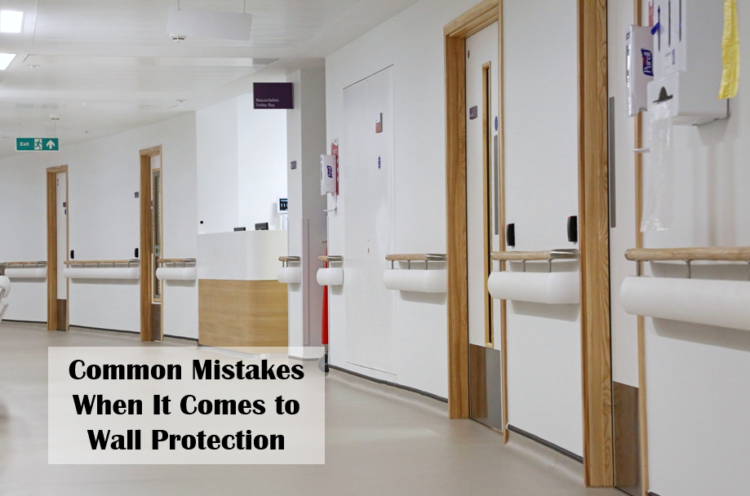
Do you have what it takes to select proper wall protection?
30 years ago, I learned from a few young architects that these folks understood designing meant understanding the installation and long-term outcomes of product selections. The way to understand this was to visit job sites, talk to the construction team and ask the facilities department to see what really worked.
Wall Protection Specifying Mistakes
- MISTAKE: My peers did it so it must be ok.
THE FIX: What may have worked for one project may not work with others. The only way to learn what really works is to visit a similar 5-year-old project your firm designed. Then you have an educated design that has a basis for product selection and locations.
2. MISTAKE: Designing without getting Furnish and Installation budgets; costs based on just material budgets over emails.
THE FIX: After finding out what has worked on past projects, design 2-3 elevations with different scenarios of wall projection and send them to the wall protection rep and CM to obtain real budgets that include installation. This will show material mark ups by the sub and other costs that will surface during the real bids.
3. MISTAKE: The project doesn’t have the time or budget for a mockup.
THE FIX: When you interviewed for a job, did your employer just hire you from your resume? Of course not. They probably interviewed you multiple times and perhaps with different people. The same holds true for products. Data sheets that show impact and abrasion tests are meaningless because it’s not relevant to what happens in a hospital. So, build a mockup and run stretchers into it; run cleaning equipment into it; ask facilities to repair it and most importantly, show the transitions of wall protection to adjacent material. This will provide a lot of accurate information to determine long-term costs.
4. MISTAKE: Selecting material with a lot of endcaps, trim and no ability for simple repairs.
THE FIX: Have you ever seen where the hospitals keep the attic stock that is in the specifications? It often looks like a teenager’s closet. Talk to your wall protection representative to find out what models have the least amount of parts and pieces. Remember to benchmark other jobs and see where the damage is occurring. This may show you where too much wall protection was used.
Less is more
It’s a simple fact that when it comes to wall protection, no one really wants to use it. With all the gorgeous material choices, who wants to put plastic on the walls?
High impact materials that are scratch and impact resistant are the only way to do this but are often chosen based on what peers did on the last job or what your client feels are the only choices. The typical scenario of handrails, sheet, and crash rails to cover an elevation may be fine, but what if the sheet gets damaged? How would you replace it when it’s glued on the wall? Do you really need a 6” crash rail and why did you choose 6”? Why not 4” ? With a little more benchmarking or understanding where the equipment impact areas are, you can keep material and labor costs down while using the right products specific to your project.
Removable Wall Panels
Believe it or not, there are systems on the market that allow multiple panel manufacturers to be used on ONE track system. This means you are not handcuffed to a specific manufacturer. Do you want the panel to match the hand rail? No problem. Do you want Trespa on one area and Pawling on the other? No problem. Metal and even acoustical panels can all be used. And best of all, they can be installed using a non-progressive track system. Meaning, you can take off one panel without disturbing the adjacent ones.
Summary
Let’s explore your options in greater detail and with more communication so you can move on to other parts of the building knowing that there will be less RFI’s and more accurate budgets during CD’s and bidding stages.
